Cages for Autoclaves
Autoclave cages are used to take the packages (tins, glasses, pouches, etc.) in layers, either directly or with the help of cage inserts. Mostly the cages are made either from galvanized perforated steel sheets or from stainless steel grid (Fig. 1).
Galvanized bar steel cages (Fig. 2) were frequently used in the past and are of course also still available as replacement. A special form is the so-called „rack-cage“, which is used to take flat cage inserts, also called „trays“(Fig. 3).
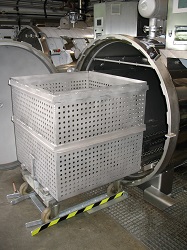
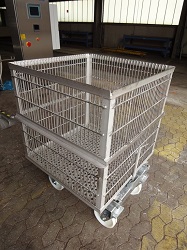
Fig. 1 Cages made from perforated steel sheets (top) and from stainless steel
grid (bottom)
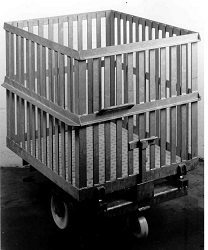
Fig. 2 Cages made from galvanized bar steel
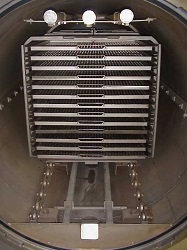
Fig. 3 „Rack“-Cage with inserted trays
Die Käfiggröße richtet sich wesentlich nach dem Autoklaven-Durchmesser. Neben den am häufigsten verwendeten Standardkäfigen (Tab. 1) sind je nach Kundenbedürfnissen und im Rahmen der Begrenzung durch den Autoklaven-Kessel auch Sonderanfertigungen möglich. Darüber hinaus bieten wir auch Käfige für Autoklaven anderer Hersteller an. Die Fertigung erfolgt nach vom Kunden zur Verfügung gestellten Zeichnungen bzw. Musterkäfigen.

Tab. 1 Usable interior dimensions of the standard cages for selected vessel sizes
*) less the height of selected bottom plate
Into the cage, a bottom plate is placed whose thickness (6, 8, 10, 12, 20 or 25 mm) and material (galvanized perforated steel plate, stainless steel perforated plate, stainless steel grid) can be varied (Fig. 3). Basically, the larger the autoclave diameter, the stronger the bottom plate should be and the stronger the bottom plate is, the sooner a stainless steel grid is best suited (cheaper lighter).
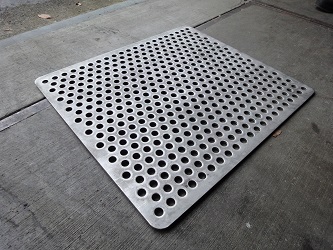
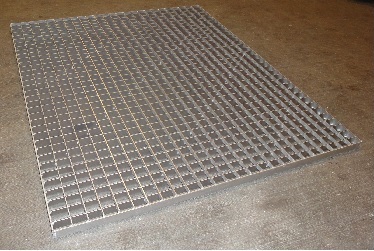
Fig. 3 Bottom plate made from 8 mm perforated stainless steel sheet (left) or from 20 mm stainless
steel grid (right) respectively.
The bottom plate is loosely inserted to be moved up and down during loading and unloading of the cages. This is done with the help of the loading and unloading station “Packfix” (Fig. 4), which transports the bottom plate together with the possibly already / still located product layers to the processing height by means of a hydraulic scissor lift.
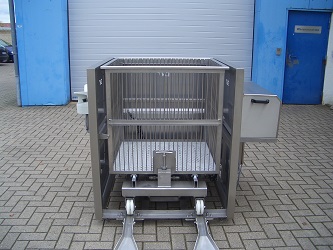
Fig. 4 Loading and unloading station “Packfix“
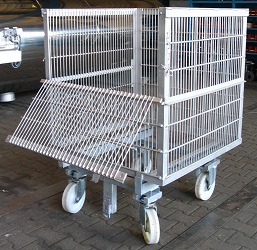
Fig. 5 Stainless steel wire cage with flap
An alternative support for loading and unloading is provided by the stainless steel wire cages with flap, which makes the lower layers inside the cage easier to reach (Fig. 5).
https://www.dft-technology.de/en/products/cages-equipment.php
